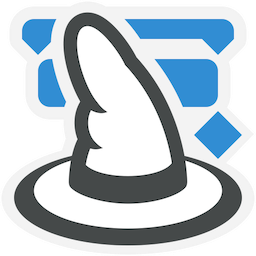Gestión de Proyectos con un Toque de Magia
Planifica, gestiona y entrega proyectos de forma eficiente. Merlin Project para macOS y iOS
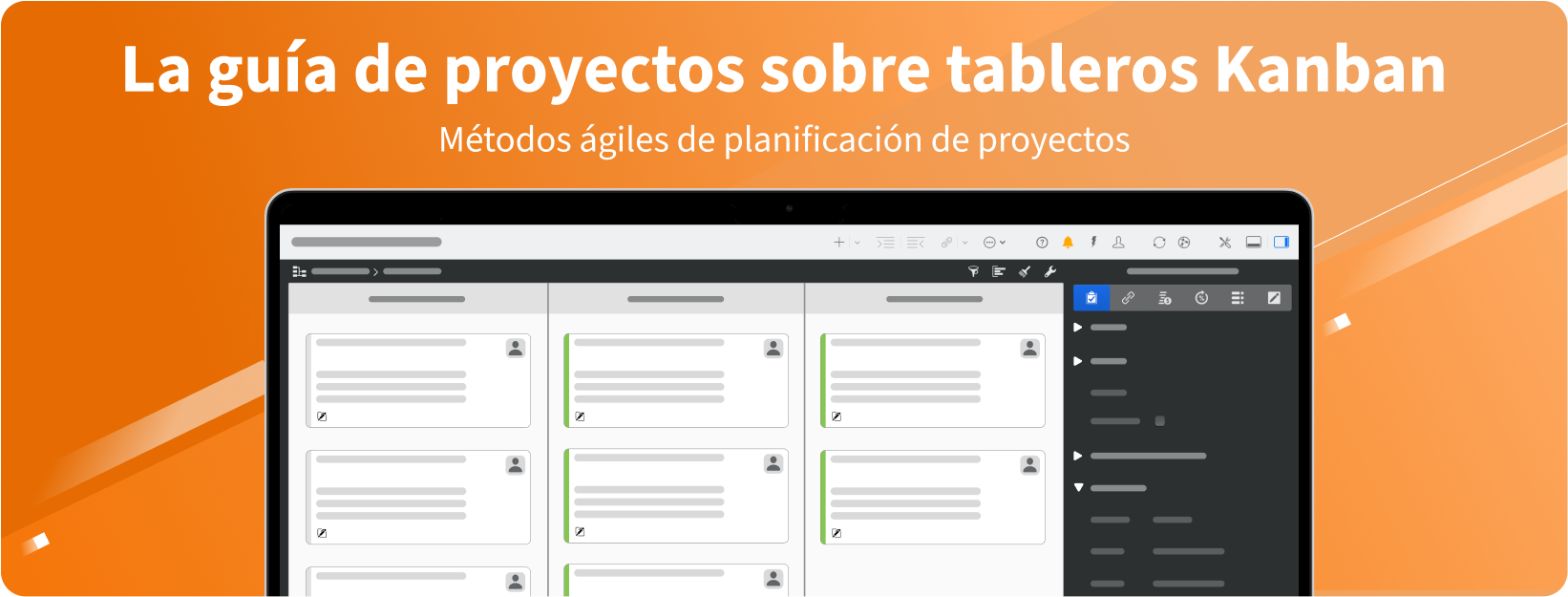
En esta guía, veremos la gestión ágil de proyectos con Kanban. Aprenderá a configurar su propio tablero Kanban, paso a paso, y descubrirá técnicas clave para gestionar el flujo de trabajo de manera eficiente, limitar el trabajo en curso y mantenerse adaptable cuando cambien las prioridades. ¡Empecemos!
Índice
Introducción a Kanban
El origen y la definición de Kanban
Los principios ágiles detrás de Kanban
Cómo implementar Kanban: guía paso a paso
Consejos y trucos
Casos de uso de Kanban
El kit de herramientas adecuado para Kanban
Gestión ágil de proyectos con Merlin Project
Reflexiones finales
Preguntas frecuentes
Imagínese entrar en una fábrica donde cada estación funciona como una sinfonía bien afinada: las piezas llegan justo a tiempo, los productos terminados pasan sin problemas al embalaje y los equipos se adaptan casi en tiempo real a las demandas cambiantes. Esta elegante danza es el resultado de un sistema de gestión de proyectos conocido como Kanban. Nacido en la industria automotriz y ampliamente adoptado por desarrolladores de software y profesionales creativos por igual, Kanban consiste en ver tu trabajo, controlar el flujo y optimizar continuamente cómo las tareas pasan de «por hacer» a «hechas».
La mayoría de nosotros hemos oído el término VUCA(por sus siglas en inglés) por ahí. Casi se ha convertido en una palabra de moda. Sin embargo, nuestro mundo es realmente Volatile (volátil), Uncertain (incierto), Complex (complejo) y Ambiguous (ambiguo). Los plazos surgen de la nada, las prioridades cambian en un abrir y cerrar de ojos y los equipos repartidos por todo el mundo no hacen más que aumentar el caos. Las rápidas disrupciones tecnológicas, las cambiantes tendencias del mercado y las expectativas siempre cambiantes de los clientes se confabulan para hacer que nuestra vida laboral diaria sea impredecible.
Kanban corta a través de este ruido. Al hacer visibles las tareas y limitar el trabajo en curso, aporta claridad y enfoque, ayudándote a navegar el cambio con confianza. Más que solo tableros y notas adhesivas, Kanban impulsa la mejora continua, manteniendo a los equipos flexibles, receptivos y eficientes, sin agotamiento.
A diferencia de los marcos rígidos, Kanban es fácil de implementar: sin cambios de rol, sin sprints obligatorios, sin planificación pesada. Ya sea para equipos o para trabajo individual, sus señales visuales mantienen las tareas organizadas y el progreso claro.

En la producción, necesitamos gestionar el flujo, no solo a las personas.
Taiichi Ohno, padre del sistema de producción Toyota
El Kanban tiene su origen en el Japón de la posguerra, donde Toyota buscaba revitalizar su sistema de fabricación. Los ingenieros de Toyota, dirigidos por el pionero industrial Taiichi Ohno, buscaron inspiración en los supermercados. Observaron que los estantes solo se reponían cuando los artículos estaban casi agotados: sin desperdicio, sin sobreproducción. Toyota replicó este sistema de «tirón» en sus fábricas utilizando señales visuales llamadas tarjetas kanban. Estas tarjetas indicaban cuándo se necesitaba un nuevo lote de componentes, evitando el exceso de existencias y asegurando un flujo fluido.
Avancemos unas décadas: en 2007, el consultor de software David Anderson adaptó el kanban al trabajo intelectual, como el desarrollo de software, las campañas de marketing y los proyectos creativos. En lugar de piezas de fábrica, las tareas o características se colocaban en un tablero y se movían por etapas, lo que garantizaba que los equipos abordaran solo un número limitado de elementos a la vez. Esta adaptación disparó la popularidad del kanban en todos los sectores.
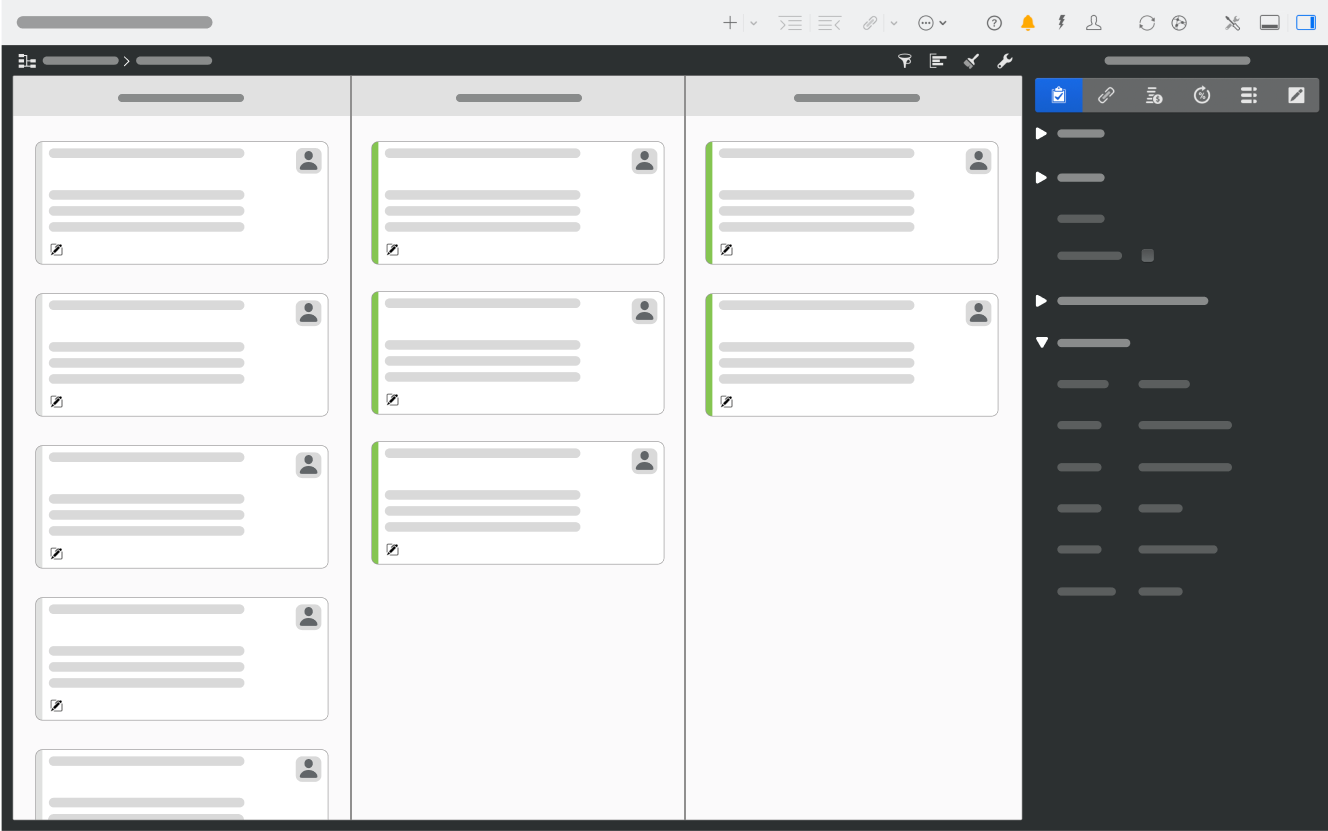
Entonces, ¿qué es exactamente Kanban? La palabra en sí es japonesa y significa «cartel» o «señal». Un tablero Kanban es una herramienta que visualiza el flujo de trabajo, normalmente dividido en columnas como «Por hacer», «En curso» y «Hecho». Cada tarjeta del tablero representa una tarea o elemento de trabajo. En combinación con otras prácticas básicas, como la limitación del trabajo en curso (WIP) y la mejora continua, Kanban se convierte en un marco flexible y eficiente.

Sin control visual, reina la confusión.
Taiichi Ohno
Kanban se considera una de las metodologías ágiles — una familia de enfoques de gestión de proyectos que enfatizan la adaptabilidad, el aprendizaje iterativo y la colaboración. Mientras que algunos métodos ágiles (como Scrum) requieren nuevos roles y ceremonias, Kanban se inclina hacia el cambio evolutivo. Se empieza con el flujo de trabajo actual, se visualiza y luego se va perfeccionando la forma en que el trabajo se mueve a través del equipo o departamento.
En el núcleo de Kanban está la idea de que los humanos captan la información mucho más eficazmente cuando es visual. (Piense en la diferencia entre una complicada lista de tareas pendientes basada en texto y un tablero claro y codificado por colores). Al trazar el recorrido que sigue cada tarea de principio a fin, Kanban revela cuellos de botella, problemas de capacidad o responsabilidades poco claras.
Los equipos suelen descubrir que las tareas se estancan en «Revisión» o «Esperando comentarios del cliente». Con Kanban, estos bloqueos no pueden ocultarse en un sistema opaco. Están ahí mismo en el tablero, lo que facilita su resolución. Este enfoque basado en el flujo significa que las tareas no se atascan indefinidamente en una sola columna y que el trabajo avanza a un ritmo constante y predecible.
Limitación del trabajo en curso (WIP)
Kanban desafía el popular «mito de la multitarea» al restringir el número de tareas en las que se puede trabajar al mismo tiempo. Este límite obliga a los equipos y a las personas a terminar las tareas antes de incorporar otras nuevas. ¿El resultado? Menos elementos a medio hacer y tiempos de finalización generales más rápidos.
Mejora continua
Kanban fomenta los ajustes incrementales en lugar de los cambios radicales y disruptivos. En lugar de revisar todo el flujo de trabajo, se observa el tablero diaria o semanalmente, se experimenta con pequeñas mejoras y se miden los resultados. Con el tiempo, estos pequeños ajustes se acumulan en importantes ganancias de productividad.
Flexibilidad en el proceso
Kanban no dice que debas realizar reuniones diarias o ceñirte a sprints fijos. Si los requisitos de una tarea cambian a mitad de camino, puedes ajustarla sin romper un sprint. Esta flexibilidad es especialmente valiosa en entornos en los que la entrega continua o las demandas impredecibles de los clientes son la norma.
Autonomía del equipo
Dado que las tareas se extraen en lugar de imponerse, los miembros del equipo tienen autonomía a la hora de elegir y abordar las tareas. Esto cambia el enfoque hacia un estilo de autoorganización, alineado con el principio ágil más amplio de que quienes realizan el trabajo están en mejor posición para decidir cómo se hace.

Kanban es un método para realizar el trabajo limitando el trabajo en curso y gestionando el flujo. He descubierto que algunos trabajos (especialmente los creativos) se gestionan con mayor eficacia mediante iteraciones, mientras que otros (especialmente los secuenciales por naturaleza) se gestionan de forma más natural con Kanban.
Mary Poppendieck, pionera del software Lean
| Ventajas | Desventajas |
|---|---|
| Se reduce el esfuerzo de gestión y aumenta la velocidad de ejecución | Los miembros del equipo deben tener competencias que se solapen para evitar cuellos de botella cuando algunos empleados estén ocupados al máximo |
| Kanban se puede utilizar con métodos de gestión tanto tradicionales como ágiles | Kanban solo funciona si los paquetes de trabajo pueden dividirse claramente en pasos de tarea delimitables |
| Los sprints cortos permiten detectar rápidamente posibles desviaciones | Los proyectos con una fecha límite fija se gestionan mejor con Scrum o TPM, ya que ponen mayor énfasis en la gestión del tiempo |
| Mayor motivación porque los equipos trabajan con más autonomía y los miembros seleccionan sus tareas del pool de forma independiente | – |
¿Desea probar Kanban en su próximo proyecto? Aquí tiene una guía sencilla:
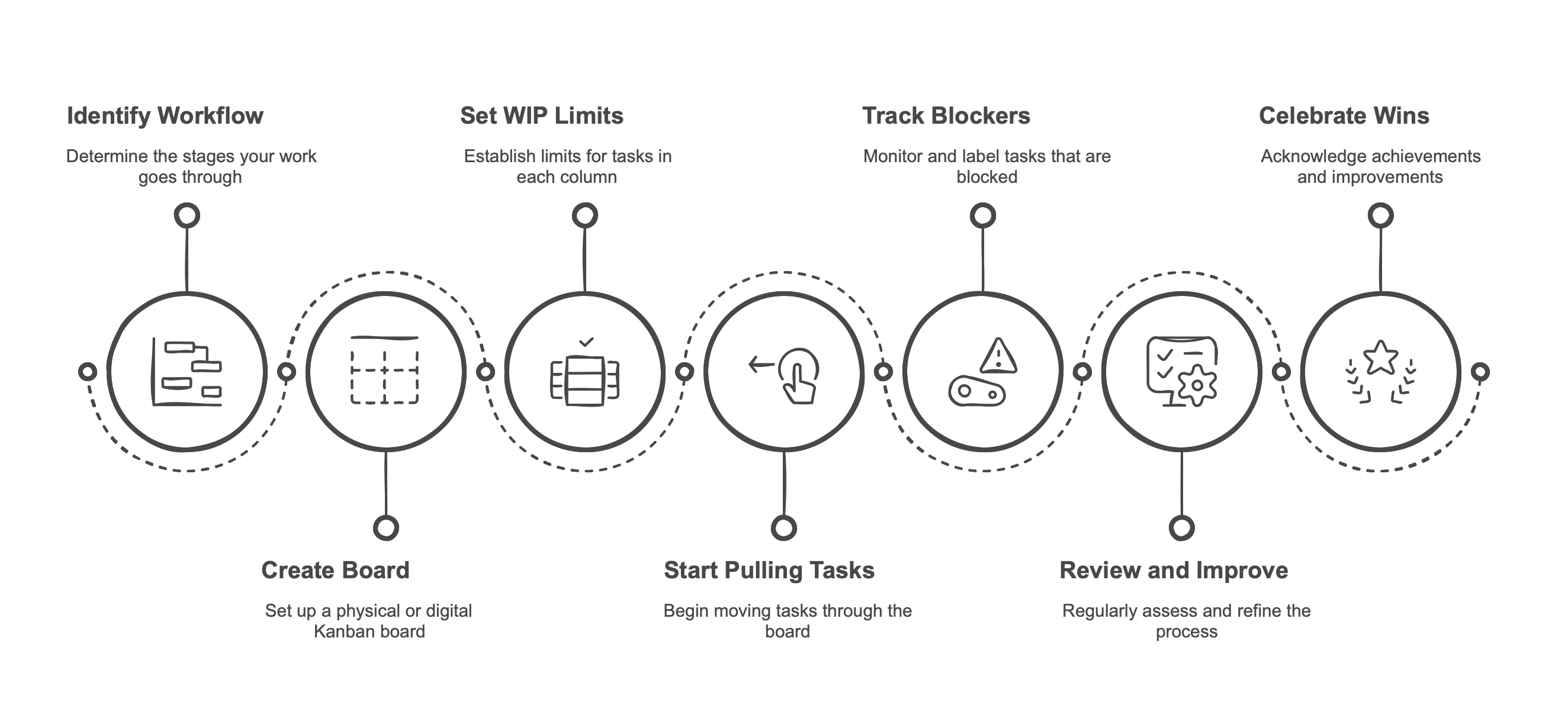
Identifique su flujo de trabajo
Anote las etapas por las que pasa su trabajo de forma natural. Un flujo simple podría ser Atraso → Haciendo → Hecho. Los flujos de trabajo complejos pueden tener pasos como Diseño → Desarrollo → Pruebas → Implementación. Al principio, manténgalo al mínimo; siempre puede añadir más columnas más adelante.
Crea tu tablero
Elige una pizarra física o una herramienta digital, lo que mejor se adapte al estilo de tu equipo. Etiqueta las columnas para representar cada etapa. Ahora, coloca notas adhesivas (o tarjetas digitales) en el tablero para cada tarea. Una tarjeta = una tarea (o historia de usuario, función, etc.).
Establecer límites de tareas en curso (WIP)
Decida cuántas tareas pueden estar en cada columna a la vez. Por ejemplo, establezca un límite de 3 tareas en «Desarrollo». Si alcanza ese límite, no podrá añadir nuevas tareas hasta que una avance. Esta regla de oro mantiene su concentración al máximo y evita la temida acumulación de tareas a medio terminar.
Empezar a sacar tareas
Empiece a trabajar en las tareas de la columna más a la izquierda. Cuando termine, pase la tarjeta a la siguiente etapa. Solo entonces, saque una nueva de la columna de la izquierda. Este sistema de extracción fomenta un flujo saludable, evitando que su tablero se convierta en un caótico desastre de «todo está en progreso».
Haga un seguimiento de los bloqueadores y supervise el flujo
Cada vez que una tarea se atasque, etiquétela como bloqueada o en espera para que el impedimento sea obvio para todos. Esta claridad estimula las resoluciones rápidas: alguien podría intervenir para corregir un error, aclarar un requisito o hacer un seguimiento con una parte interesada.
Revisar y mejorar
Revise su tablero periódicamente (semanal o quincenalmente). Identifique los cuellos de botella, los bloqueos recurrentes o las tareas que tardaron mucho más de lo esperado. Ajuste los límites de WIP, refine las columnas o experimente con nuevas reglas. Esta reflexión cíclica es el motor de la mejora continua.
Celebrar las pequeñas victorias
A medida que el flujo se estabiliza y el rendimiento aumenta, reconoce los logros, como terminar las tareas más rápido o reducir drásticamente el número de tarjetas en «Haciendo». Celebrar estos hitos aumenta la motivación y consolida nuevos hábitos.
Aprende del propio David Anderson. Dio una conferencia sobre el sistema Kanban en 2014:
Es tentador crear un tablero complejo con subcolumnas anidadas, etiquetas codificadas por colores y un sinfín de estados personalizados. Resiste la tentación. Un tablero minimalista con pocas columnas es más fácil de mantener e interpretar. Una vez que tu equipo se sienta cómodo y vea la necesidad, amplíalo.

Empiece con lo que hace ahora y respete los roles, responsabilidades y cargos actuales.
David Anderson, desarrollador del método Kanban
Para mayor claridad, mantenga las columnas con colores y formas consistentes. Si es necesario, resalte las tareas prioritarias en rojo o añada iconos de «urgente» a tarjetas específicas. Además, defina políticas explícitas, como «Una tarea solo puede pasar a «Hecho» si se comprueban todas las subtareas» o «Nada entra en «En curso» si ya tenemos 4 tareas ahí». Coloque estas pautas junto al tablero para que todos cumplan las mismas reglas.
Para que el tablero sea fácil de entender, utilice las versátiles opciones de estilo de Merlin Project para asignar a los recursos una imagen y un color. Así podrá ver de un vistazo quién es el responsable de una tarea. Esto le da al tablero un aspecto personal.

Para trabajar en un equipo interno, es genial que las fotos de los miembros del equipo se puedan mostrar en el tablero Kanban. Esto facilita a mis colegas orientarse en el tablero y todos pueden ver qué tarjetas y, por tanto, qué tareas se les han asignado. Si luego asigno colores a los departamentos individuales, puedo estructurar visualmente el tablero de una manera estupenda. ¡Esto siempre es bien recibido! Y si no tengo una foto de una persona externa, simplemente uso el logotipo de la empresa correspondiente.
Kathrin Lamm, formadora certificada de Merlin Project
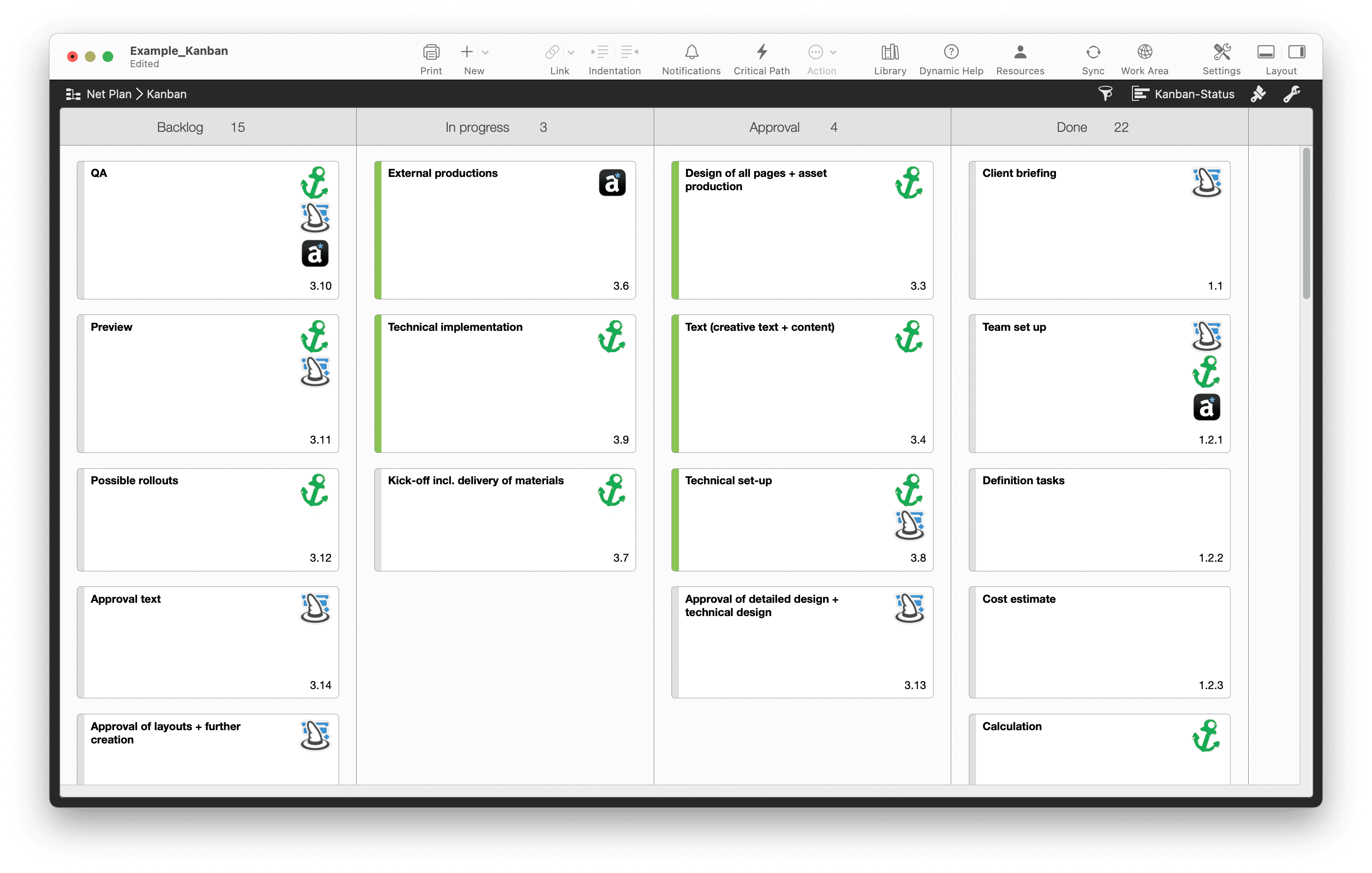
Considere hacer un seguimiento del tiempo de ciclo, es decir, el tiempo que una tarjeta pasa en «En curso» hasta que se marca como «Hecho». Medir regularmente esta métrica ayudará a su equipo a ver si los cambios (como límites más bajos de WIP o nuevos protocolos de prueba) realmente aceleran la entrega. Si los tiempos de ciclo se acortan con el tiempo, va por buen camino.
A veces surgen solicitudes urgentes que no pueden esperar. Decida por adelantado cómo gestiona su equipo este tipo de interrupciones. Puede reservar una columna especial llamada «Acelerar», pero tenga en cuenta una política estricta: demasiadas tareas aceleradas rompen su flujo normal. Otra estrategia es asignar una pequeña parte de su capacidad a «tareas urgentes» cada semana, asegurándose de mantener la flexibilidad sin descarrilar todo lo demás.
Si tu tablero empieza a sentirse sobrecargado, los carriles (horizontales) pueden ayudar a categorizar las tareas por prioridad o tipo. Por ejemplo, un carril superior podría ser «Errores críticos», mientras que un carril inferior podría ser «Funciones regulares». Este enfoque estructurado garantiza que las tareas más importantes no queden enterradas.
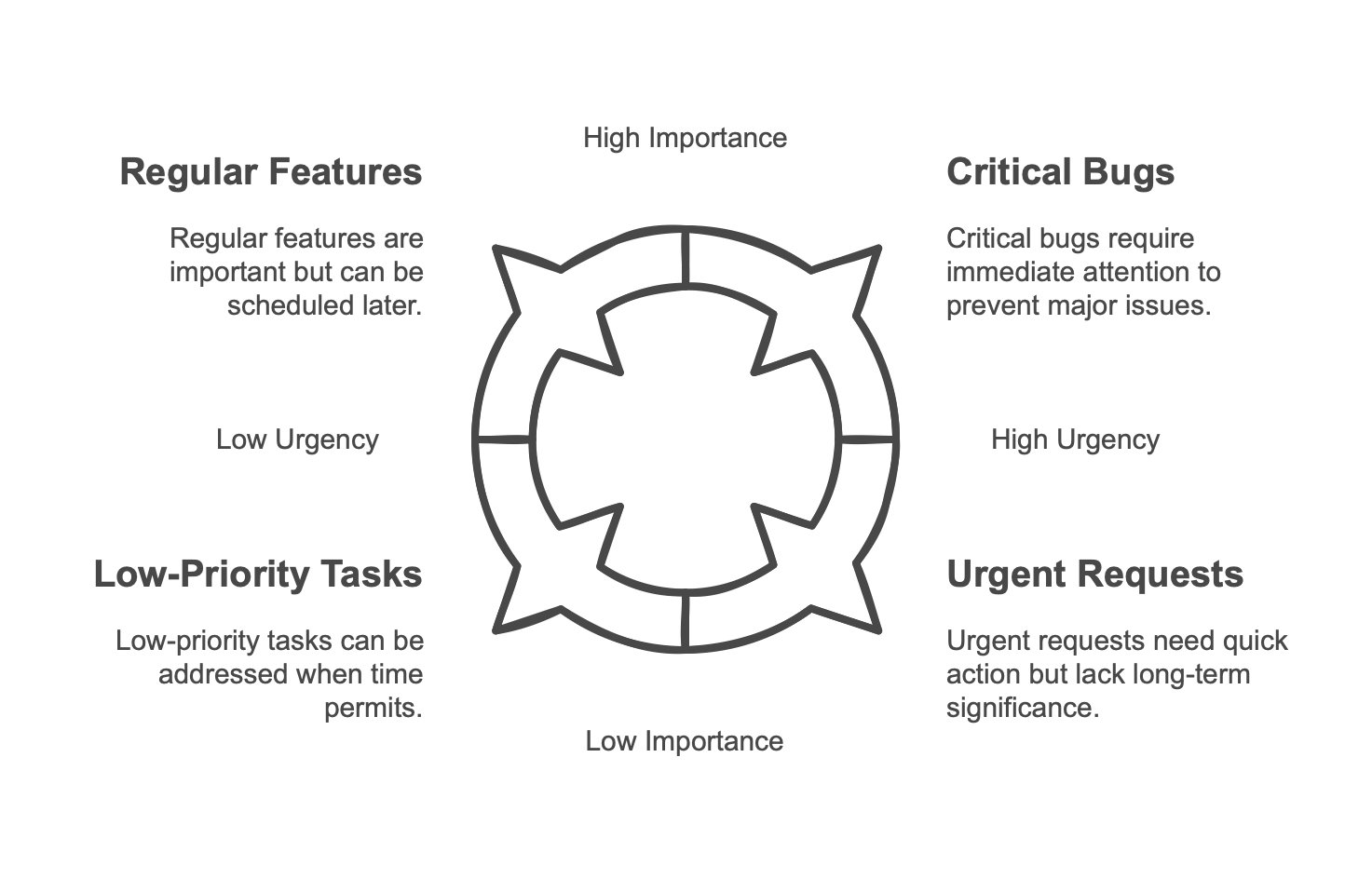
La flexibilidad de Kanban lo hace adecuado para varios contextos:
Para los equipos que manejan flujos de trabajo continuos, como el desarrollo de software o la producción de contenido, Kanban proporciona una vista compartida del progreso. Cada miembro ve qué tareas están en curso, quién es el propietario de qué y dónde se puede necesitar ayuda. Las revisiones semanales o diarias se vuelven más significativas porque se discuten tareas visibles y cuellos de botella, no puntos vagos.

Cuando se pide a los equipos que trabajen juntos para analizar problemas y diseñar soluciones, la calidad es mayor.
David Anderson, fundador del método Kanban
Kanban también puede servir como su sistema personal de lista de tareas pendientes, especialmente si hace malabarismos con múltiples proyectos o responsabilidades pequeñas. Un simple tablero de tres columnas — Por hacer, Haciendo, Hecho — le ayuda a ver lo que sigue en la fila y evitar comenzar demasiadas tareas a la vez. Algunas personas incluso usan aplicaciones digitales de Kanban en sus teléfonos o tabletas para realizar un seguimiento de las tareas domésticas, la planificación de las comidas o los objetivos de fitness.
En las organizaciones más grandes, los equipos suelen combinar Kanban con métodos más tradicionales como Waterfall o con métodos ágiles más estructurados como Scrum. Este enfoque, a veces llamado Scrumban, permite programar sprints o lanzamientos planificados sin dejar de utilizar un tablero de estilo Kanban para gestionar las tareas diarias. El resultado es un entorno híbrido que se beneficia de ambos mundos: la previsibilidad de los ciclos de planificación y la fluida adaptabilidad de Kanban.
| Aspecto | Kanban | Scrum |
|---|---|---|
| Reglas | Pocas reglas fijas | Conjunto de reglas complejas |
| Ámbito | Proyectos y tareas rutinarias (también adecuado para personas individuales) | Solo proyectos (no para tareas rutinarias) |
| Tamaño del Equipo | Útil incluso para equipos muy pequeños o personas individuales | Requiere al menos tres miembros en el equipo |
| Roles | No hay roles fijos | Product Owner, Scrum Master, Equipo de Desarrollo |
| Tablero | Mantenimiento continuo del Tablero Kanban | El Tablero de Scrum se reinicia después de cada sprint |
| Backlog | La priorización es opcional | La priorización es obligatoria |
| Iteraciones | Opcionales, se puede trabajar sin ciclos de sprint claramente definidos | Sprints (iteraciones) fijos son obligatorios |
| Tamaño del Proyecto | Si el proyecto crece mucho, Kanban puede volverse confuso; es necesario dividirlo en unidades más pequeñas | Gracias a su conjunto estructurado de reglas, Scrum también puede aplicarse a proyectos de gran magnitud |
| Gestión del Tiempo | No hay un enfoque fuerte en las fechas límite | Las fechas límite y la gestión del tiempo son prioritarias (p.ej., mediante sprints y velocidad) |
Los tableros Kanban pueden ser tan simples como notas adhesivas en una pizarra o tan sofisticados como plataformas basadas en la nube que sincronizan tareas en distintas zonas geográficas. El mejor enfoque depende de las necesidades de su equipo, la complejidad de los proyectos y si necesita colaboración en tiempo real, informes o acceso remoto.
La elección entre los tableros Kanban físicos y digitales depende del flujo de trabajo de su equipo, el estilo de colaboración y la necesidad de flexibilidad. Aquí tiene una rápida comparación para ayudarle a decidir cuál se adapta mejor a su proyecto.
Para equipos geográficamente dispersos, un tablero Kanban digital es casi innegociable. Busque aplicaciones con una (link: support/faq/sync/magicsync text: sólida sincronización en la nube, edición en tiempo real y versiones móviles. De esta manera, un desarrollador en Singapur y un diseñador en Canadá pueden ver exactamente el mismo tablero, sin confusión sobre qué tareas están en progreso.
A veces, se necesita algo más que un tablero rápido para mostrar a su jefe o a sus clientes. El software Kanban que ofrece filtros avanzados, gráficos o análisis puede ayudarle a presentar información basada en datos, como plazos de entrega, rendimiento o tasas de error, sin tener que compilar manualmente la información cada vez. Las vistas tipo Gantt también son útiles para las partes interesadas que prefieren perspectivas basadas en líneas de tiempo.
Los tableros Kanban suelen funcionar mejor cuando se integran a la perfección con calendarios, aplicaciones de chat o plataformas especializadas como GitHub. De esta manera, las tareas permanecen sincronizadas con su base de código o su calendario de eventos, lo que reduce la doble entrada y la confusión que surgen cuando diferentes partes de su organización viven en silos digitales separados.
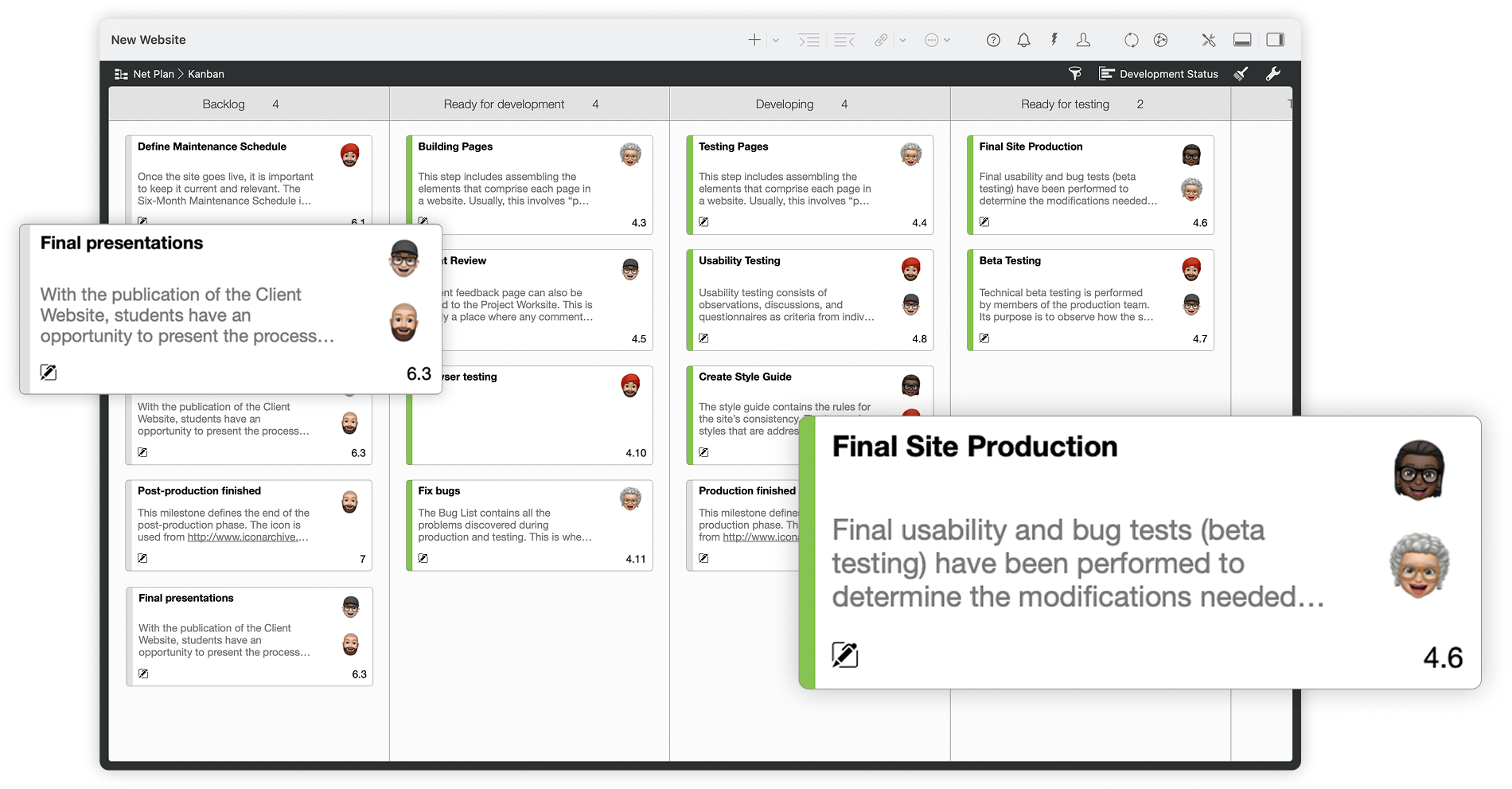
Si está buscando una solución Kanban que se integre perfectamente con las capacidades tradicionales de gestión de proyectos, como diagramas de Gantt, análisis del camino crítico, gestión de recursos y más, no busque más allá de Merlin Project. A diferencia de las aplicaciones Kanban independientes, Merlin Project le permite unificar sus flujos de trabajo ágiles y tradicionales bajo un mismo techo.
Gestión ágil de proyectos en macOS e iOS
El tablero Kanban de Merlin Project ofrece una forma dinámica de gestionar proyectos al visualizar el trabajo en columnas estructuradas como «Por hacer», «En curso» y «Hecho». Las tareas se convierten en tarjetas que se pueden arrastrar, lo que permite a los equipos realizar un seguimiento del progreso, establecer estados personalizados y controlar los límites del trabajo en curso (WIP), lo que garantiza la concentración y la eficiencia. El tablero está totalmente sincronizado, lo que permite a todo el equipo colaborar en tiempo real, con actualizaciones que se reflejan al instante para todos los que trabajan en el proyecto.
Cambie de metodología sin problemas
Con sincronización en tiempo real en las vistas Kanban, Gantt y mapa mental, Merlin Project le permite cambiar instantáneamente de perspectiva. Empiece con una lluvia de ideas en un mapa mental y luego transfiéralas a un tablero Kanban para la gestión de tareas o a un diagrama de Gantt para la programación. Las columnas personalizadas como «Bloqueado» o «Prueba» ayudan a perfeccionar los flujos de trabajo, mientras que las tarjetas de tareas admiten archivos adjuntos, asignaciones de recursos y comentarios, lo que garantiza una colaboración perfecta en todas las vistas.
Swimlanes contra la complejidad
Para proyectos complejos, los swimlanes ayudan a categorizar el trabajo por prioridad, conjunto de características o responsabilidad del equipo, lo que facilita la gestión de múltiples flujos de trabajo en un solo proyecto. El formato avanzado permite tarjetas codificadas por colores y filtros basados en reglas para resaltar las tareas críticas, mientras que las herramientas de informes integradas proporcionan una visión clara del proyecto.
Kanban destaca por su simplicidad, adaptabilidad y enfoque en la mejora continua. Originario de las fábricas, pero ahora omnipresente en estudios de diseño, equipos de software e incluso listas de tareas personales, el principio básico de Kanban sigue siendo el mismo: visualizar el trabajo, limitar la carga de trabajo y seguir mejorando.
Tanto si gestiona una iniciativa corporativa en expansión como sus propios proyectos personales, la mentalidad Kanban puede reducir la complejidad, aclarar las prioridades y ofrecer resultados de forma fiable.

No se puede generar progreso cuando estamos satisfechos con las situaciones existentes.
Taiichi Ohno
Sus ideas, nuestra magia – ¡realice proyectos de forma sencilla!
Pruebe ahora 30 días de forma gratuita.
